THE Mercedes-Benz EQC it's not the star's first electric car, but it feels like it. It is the first intended for series production — they will be produced, for now, at the rate of 100 a day, with that number doubling in 2020 — and it is wrong for arriving… late.
Its rivals arrived earlier, BMW with the tiny i3 — an iX3, a rival to the EQC arriving in 2020 — and Audi with the still-fresh e-tron. Even the smallest Jaguar anticipated with the excellent I-Pace, and that's not counting the pioneer Tesla.
And what better place to discover the new Mercedes-Benz EQC than in the “capital” of the tram world, Norway?
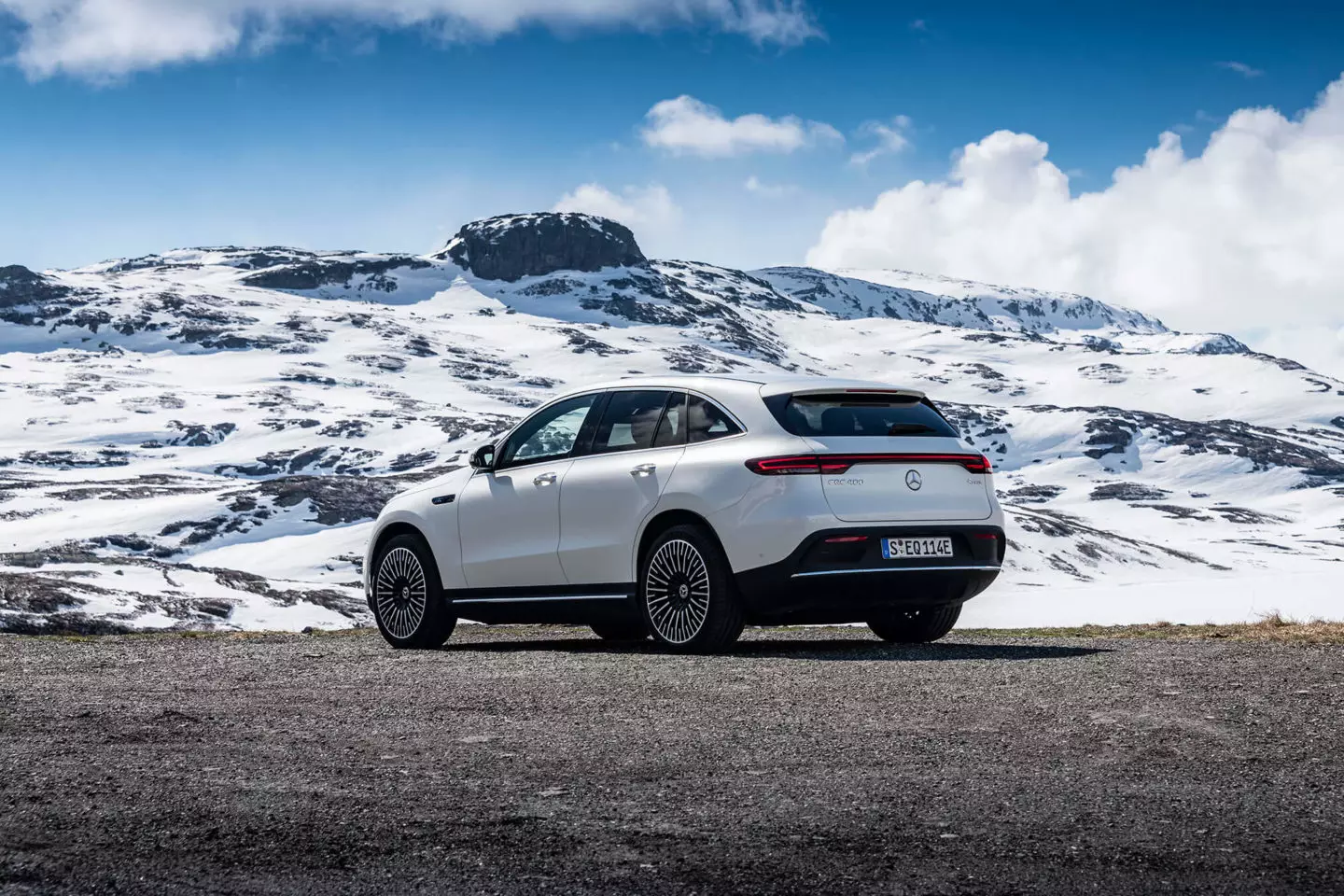
At first glance the EQC doesn't look like more than a GLC, but it's also no wonder, as they both share a platform and are even produced on the same production line. Unlike Jaguar, Mercedes-Benz, like Audi and also as BMW will do with the future iX3, have not created an exclusive platform for mass-production electrics — a way to reduce the risk, given the many doubts that still exist. back to the financial viability of electric cars.
Subscribe to our newsletter
Like the Audi e-tron, the EQC, on the outside, looks like a “conventional” car, which is, as it were, a vehicle with an internal combustion engine. In the end we have an SUV with well-defined two volumes, resembling a more stylized GLC, with more fluid and aerodynamic contours (Cx of just 0.27) — both have the same wheelbase of 2783 mm, but the EQC is longer 11 cm (4761 mm).
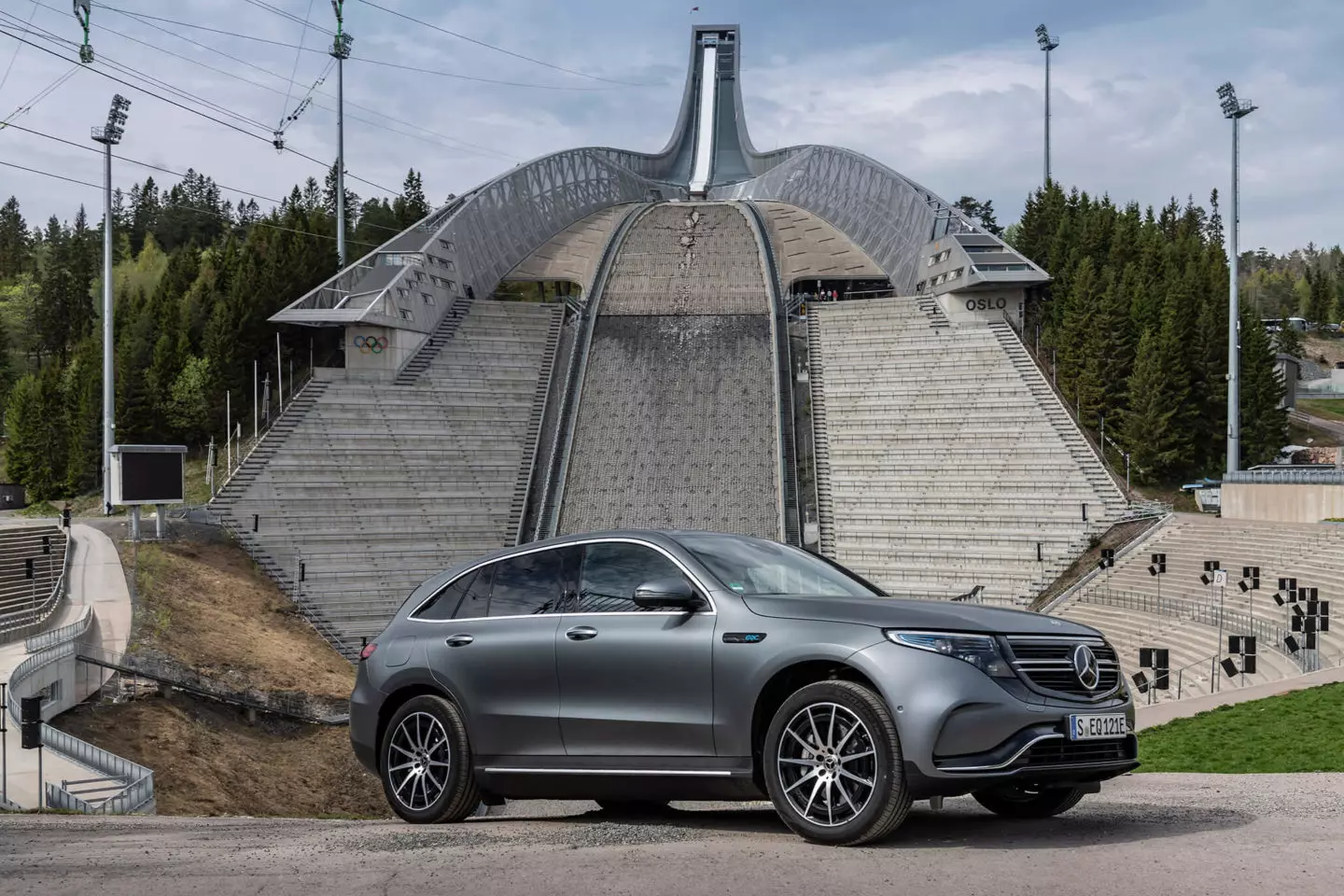
The feeling of being a car “like so many others” continues inside where, despite there being a lot of space on board, there isn't that perception of… space that we find in electric cars with dedicated platforms — we feel more cozy, without a doubt, even if it is the raised floor, a consequence of the batteries under our feet.
More than an electric GLC
We would not be far from the truth in referring to the EQC as a “simple” GLC with an electric motor, however, as in all stories, it is not that simple. When you look at what's under the body, it's a remarkable feat that has been achieved, allowing the EQC to be produced on the same production line as the GLC.
It's even impressive how this generous rolling dough is able to maintain rhythms worthy of a hot hatch on a winding road.
The biggest difference lies, of course, in the “fitting” of the batteries in the platform. These are on the floor of the platform, between the axles, and are of 80 kWh — 90 kWh for the i-Pace, 95 kWh for the e-tron — consisting of 384 cells, divided into six modules (two of 48 cells each, and four of 72 cells each), with a voltage of 405 V and one rated capacity of 230 Ah.
View this post on Instagram
By being so low and being so heavy (650 kg), they contribute to a low center of gravity with obvious benefits when it comes to dynamic behavior, despite the 2,495 kg that the EQC shows on the scale — we'll go there soon…
The Mercedes-Benz EQC has two electric motors, one per axle, each with 150 kW (204 hp) of power, that is, 408 hp in total and 760 Nm available from the moment we press the accelerator. Despite being equal in power, the two engines differ in purpose: the front for efficiency and the rear for performance. As a general rule, it is the front engine that animates the EQC in the various driving scenarios.
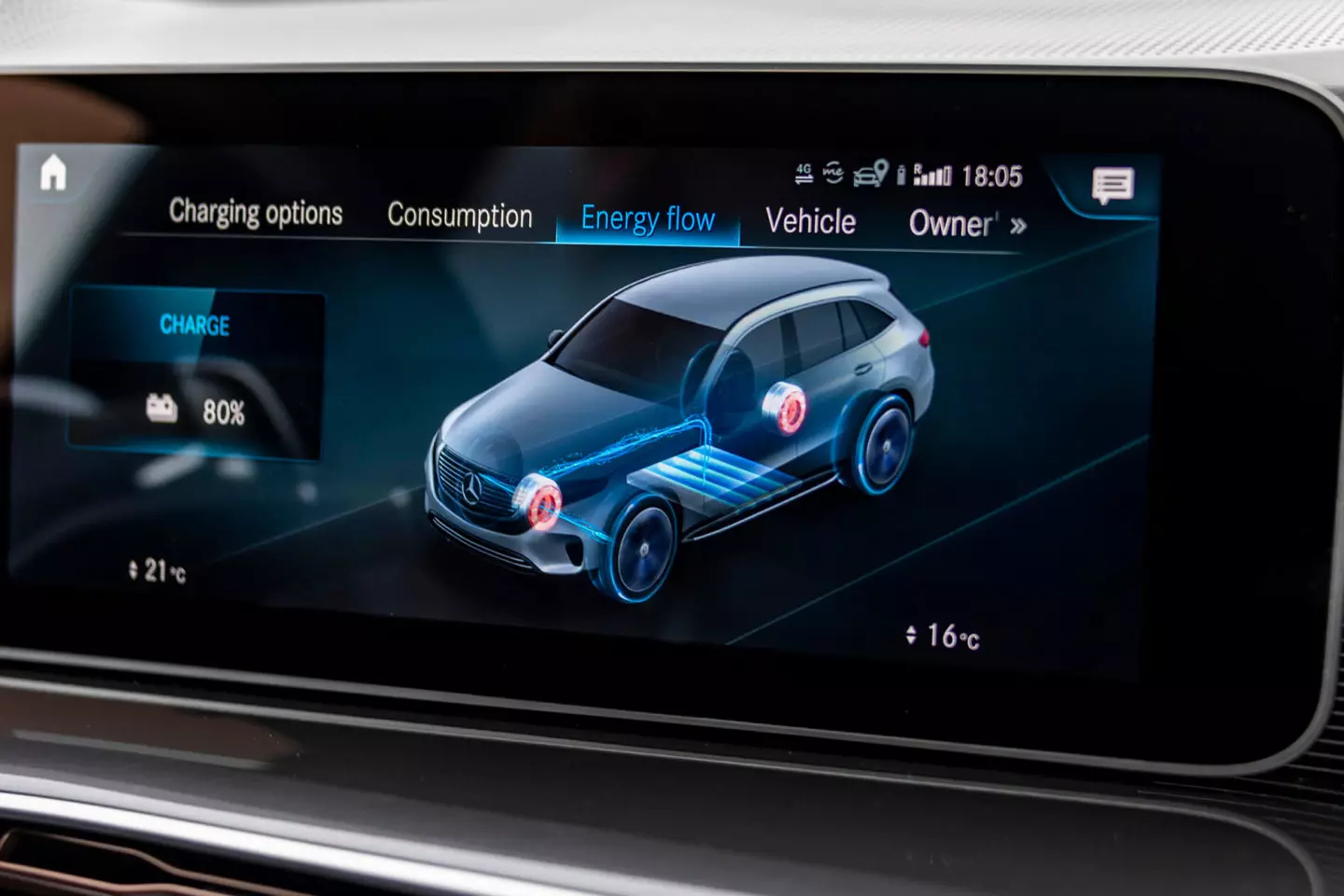
The most common situation: only the front engine is required in most situations.
Depressing the accelerator pedal with conviction, 5.1s is enough to reach 100 km/h and the force with which it propels us against the back of the seat never ceases to amaze, even with four occupants aboard, as I have had occasion to verify.
At the controls, "nothing new"
Sitting behind the wheel, the EQC couldn't be from a brand other than Mercedes-Benz — the same cannot be said for the exterior. Interior with excellent assembly and materials and with a familiar design, but with specific details that set it apart. The highlight goes to the ventilation outlets that abandon the circular shape of a turbine for a rectangular shape, and painted in a unique Rose Gold tone — personally they have my vote, being better integrated into the whole...
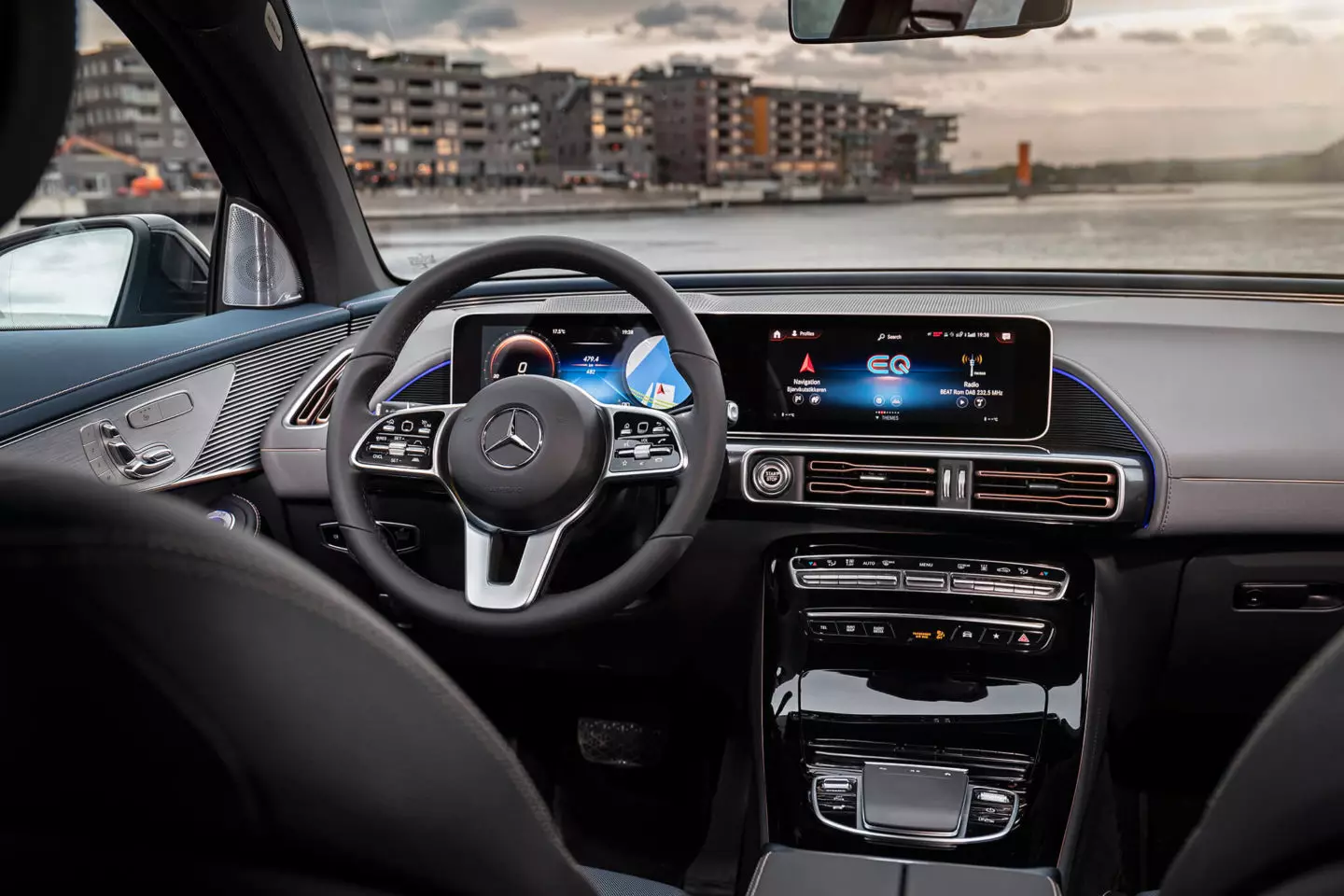
Familiar design, but with some unique details, like the ventilation outlets.
Naturally the cockpit is marked by the two horizontal screens that make up the MBUX system , here with specific functions dedicated to the EQC, especially those relating to charge management and battery charging.
The wide (electric) adjustments of the seat and steering wheel allow you to quickly find a good driving position and visibility is good — the A pillar gets in the way in one or another very specific situation, but nothing serious. Mercedes-Benz EQC maintains the start button, allowing you to start the gear after selecting “D” on the lever behind the steering wheel — until now, typically Mercedes…
Shhh… You can hear the silence
We started marching and… silence. Okay, we know how silent electric cars can be, but at EQC, sound insulation is on a different level, having been one of the areas that received the most attention from the brand's engineers, who struggled to suppress, above all, the rolling noise.
I can say that they did it with unquestionable success, such is the effective way in which the EQC isolates us — it's almost like entering a soundproof cabin… The sounds that reach the cabin seem to be all far away.

Stools tend towards the firm, but comfortable, and support the body well.
We have several driving modes available — Comfort, Eco, Max Range, Sport and Individual — and considering all the warnings we've received about speed limits on Norwegian roads, Eco and Comfort are enough, with little room to unleash potential performance and dynamic performance of the Sport mode.
The moderate speeds at which we traveled allowed us to verify the excellent comfort on board, the weight of the steering — not as light as one would expect — and the excellent feel of the pedals, especially the brakes, a task not always easy to achieve, especially in the transition between regenerative and conventional braking.
Eco Assist
Among the many functions available, ECO Assist helps the driver to achieve maximum efficiency by maximizing autonomy. Using the navigation system, signal recognition and radar and cameras, ECO Assist takes on predictive functions, informing the driver when to take his foot off the accelerator or when to use the "coasting" function, for example. When used in conjunction with Max Range mode, which adds a "step" to the accelerator that the driver must not go through, it allows us to stretch our range to the maximum, so that we always reach our destination.
Regenerative braking, a way of life
Speaking of regenerative braking, there are five levels — D Auto, D + (no regeneration), D, D -, D -. In the last level, the D -, it is possible to drive with just the accelerator pedal without touching the brake pedal , given the regeneration force available, effectively decelerating the car (the brake lights are applied), even on descent.To select the regeneration levels, we have paddles behind the steering wheel, the same ones we would use to change gears in a car with automatic transmission in manual mode and with an internal combustion engine.
This new purpose in the paddles function ends up having a similar effect, effectively simulating the engine-brake effect, which helps to maintain the limited speeds allowed on Norwegian slopes, or else leave the car in “freewheeling” on plane, without loading on the accelerator. The use of paddles ends up becoming an integral part of the driving experience, given how often we use them.
2500 kg… Will it be able to bend?
Definitely yes… It's even impressive how this generous rolling mass is able to maintain rhythms worthy of a hot hatch on a winding road. Unfortunately, opportunities to “stretch” the Mercedes-Benz EQC were rare, but it did detect a near-zero body roll and a neutral attitude when the grip limits are reached, valiantly resisting understeer. And, of course, ready action of the electric motors, always capable of putting a smile on our lips with each more vigorous acceleration.
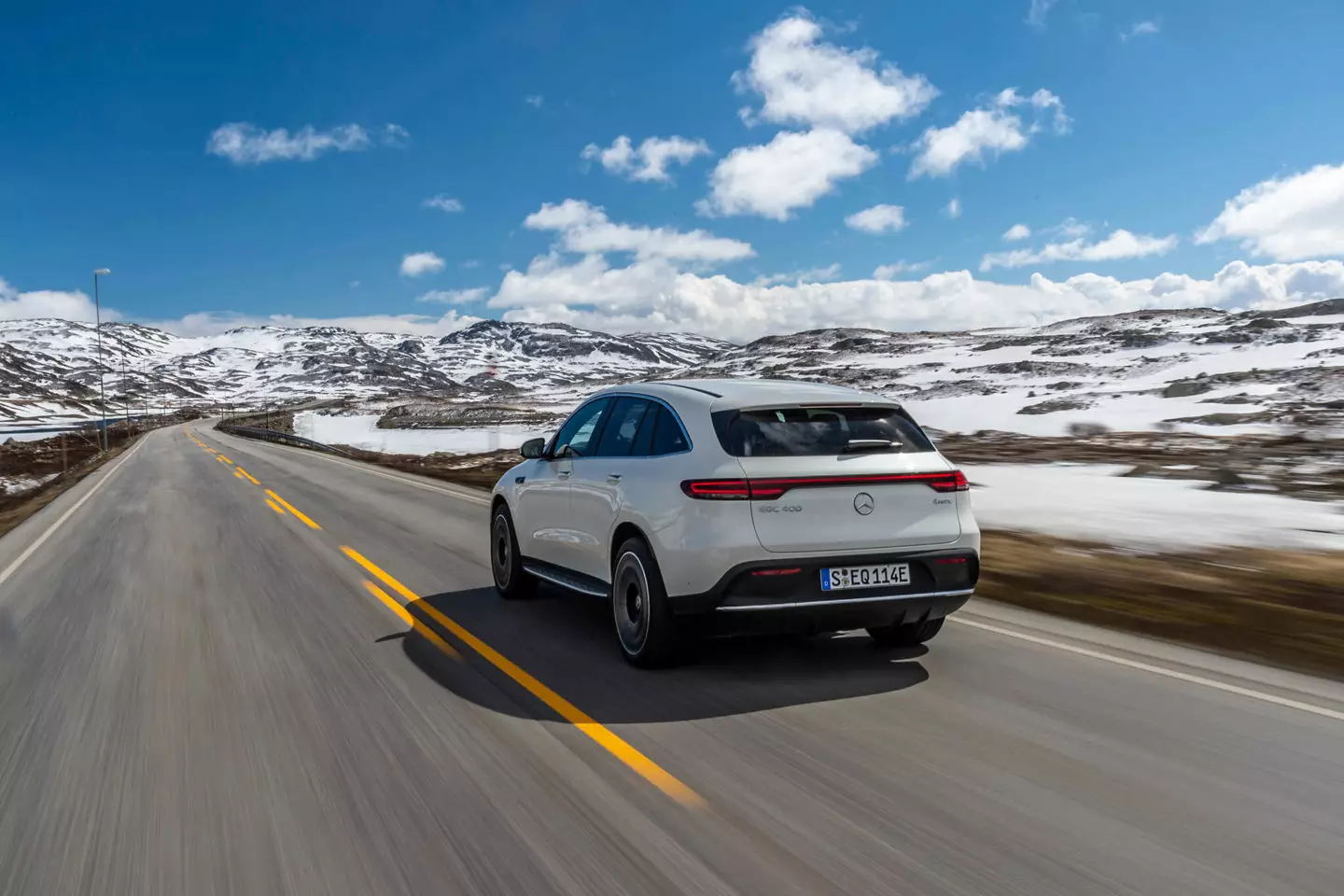
Only the 2500 kg is there and moving. It's all too easy to get too fast around a corner — it's especially when you're braking hard that you feel all the mass of the EQC. Dynamically, a Jaguar i-Pace is as effective or more effective and more exciting, but the Mercedes-Benz EQC does not disappoint.
How many coffees do I have to drink for the battery to charge?
It will depend a lot on where the EQC is loaded, but it's a good idea to accompany the coffee with a cake… and maybe a newspaper. During the presentation, we were able to charge the EQC on the IONITY network, the European network of fast charging stations (up to 350 kW) — there is still no station in Portugal.
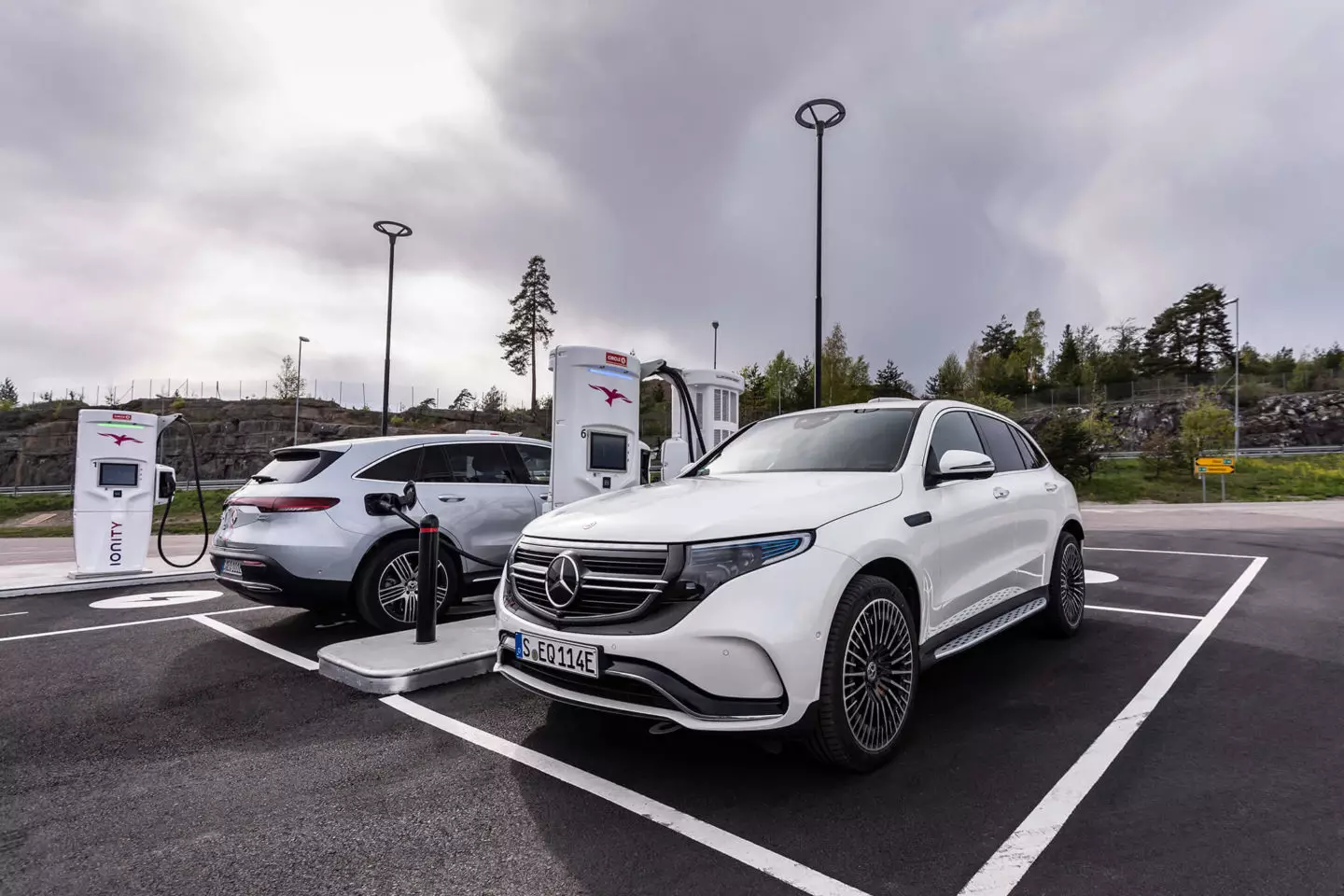
Norway already has Ionity network stations. There are still no plans for the arrival of this network in Portugal.
For now, the EQC only allows charging at 110 kW and in the 10-15 minutes it was on, the battery capacity rose from 35-36% to close to 50%, despite the load received having stabilized at around 90 kW . Taking full advantage of its charging potential, 80% of the battery is charged in 40 minutes.
Fully charged, the battery allows you to cycle between 374 km and 416 km (WLTP) — varies by equipment level — and the combined electron consumption is 22.2 kWh/100 km . Considering the restriction to the speeds practiced, it was possible to go down from 20 kWh on some of the routes.

Very competitive values, especially those referring to autonomy, considering the competition that has higher capacity batteries.
In Portugal
The Mercedes-Benz EQC can already be ordered in Portugal, with the first units arriving at national dealerships at the end of October. The price starts at 78 450 euros , a value lower than the more than 80 thousand euros for e-tron or i-Pace.
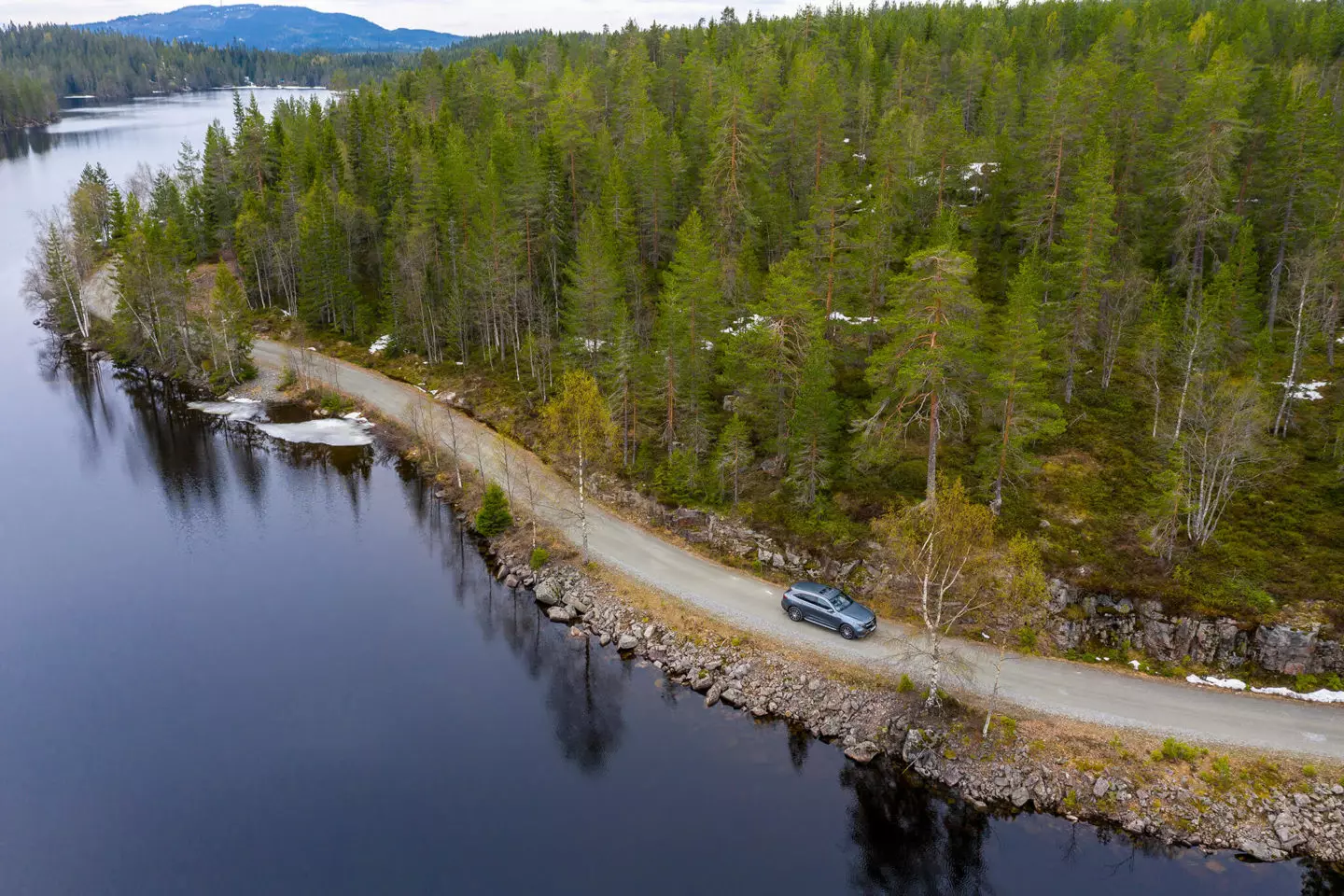
It wasn't just the EQC that impressed — the Norwegian landscape is worthy of an idyllic world.
